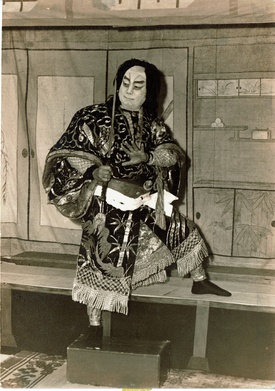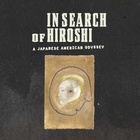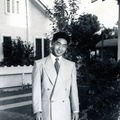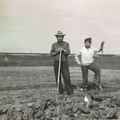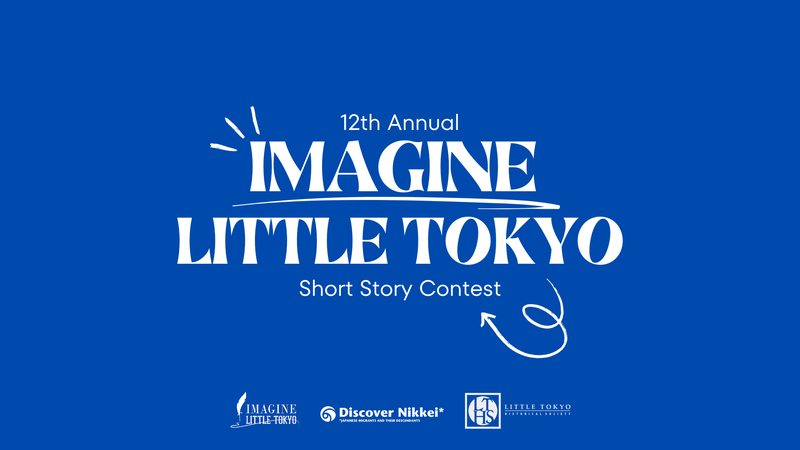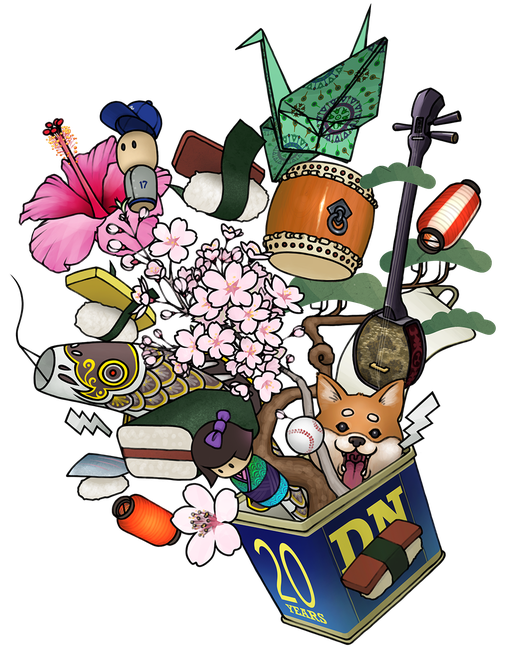One Sansei told me when he went to Japan, he was delighted to see that there were all kinds of Japanese: quiet and shy, loud and aggressive, polite, rude. “The Japanese of Japan have the whole range of human behavior through which they express themselves,” he said. “We here in America confine ourselves to only a narrow band in the spectrum.”
I recalled from my childhood that my father and his Issei friends were a hard-drinking, fun-loving group. They played as hard as they worked and individually they had distinctive personalities. Not all of them were honest or thoroughly reliable. As a group they contrasted sharply with their comparatively quiet, meek, and bland Nisei children. World War II was an economic catastrophe for the Issei and most of them never recovered from it. But for most Issei, the war did not present any conflicts of loyalty and it did not seem to affect how they felt about themselves.
The Issei I talked to said their greatest worry was survival. Many Japanese who were employed by whites lost their jobs when the war broke out and were without any means of support. And when the “evacuation” began, some feared they were being sent to extermination camps. It came as an enormous relief to them that instead of being killed they were provided with food and shelter.
Their feelings about the political aspect of the war were in most cases clear. Shosuke Sasaki, an American-educated Issei who lived in Seattle, said:
“I felt the United States had been prodding Japan and succeeded in forcing Japan to fire the first shot. I was saddened because Japan was industrially not able to fight a country of the size of the United States, and stood a good chance of being crushed. I didn’t blame the Japanese... Japan was on its knees for some kind of settlement from this country, but this country’s only response was to spit on us. While I was saddened, I felt a certain pride that Japan refused to be bullied and insulted any longer.”
Sasaki was contemptuous of the Japanese American Citizens League, which cooperated with the wartime internment of Japanese. “They got down on all fours and licked the white man’s boots with eagerness,” he said.
Other Issei I interviewed were not as harsh with the United States or with the Japanese American Citizens League as Sasaki, but none of them expressed any shame or guilt concerning the war or any lingering fears. The psychological trauma from the war appeared to have been sustained mainly by the Nisei.
Bebe Toshiko Reschke, a Nisei psychiatric caseworker in Hollywood, California, was a child during the war, but she recalled that while in camp three military policemen came into her family’s compartment to search for contraband.
“I had such a feeling of being violated,” she said. “I still have a problem with that, of trusting authority.... That anyone can have such control over you and it can happen so fast. When I read these negative stories dealing with Japan, I still get that emotional reaction. I think, ‘Oh my God, the American public is turning against us again.’ This time I’m not going. That’s my line. This time I’m going to fight. I’ve joined the American Civil Liberties Union. That’s my way of coping with my fears about what happened.”
I had not wanted to visit the sites of any of the camps. But finally my editor at National Geographic convinced me that I should try to find the former site of the Gila River Relocation Center. I was glad when Sabine offered to go with me for it was becoming clearer to me that I was afraid of going to Gila. I saw myself wandering around in the desert in a Land Rover miles away from civilization.
I had tried to rent a four-wheel drive vehicle, but when we got to Phoenix none were available. I had made sure to bring along a pocketknife. It might be needed to cut open a snake bite. I made a mental note to buy a six-pack of Cokes to put in the trunk of the car. It would keep us going for a while if we got lost in the desert.
When we got to our hotel, my chest was congested and I knew I was coming down with a case of bronchitis. It was going to be a race. I had to get to the camp site before the disease put me in bed. I called my brother, Nimashi, who lived in Phoenix, and he said he wanted to see the camp site, too. He had been living in Phoenix for nearly forty years and had not once visited the site, but he said he knew somebody who could give us directions.
We met Nimashi and his wife Sadako for breakfast. I had seen Nimashi only a few times after the war. At seventy, he was still working as a gardener. He was slim and bronzed by the sun and looked fit.
The camp site, we later found, was only about thirty miles south of Phoenix and the Phoenix-to-Tucson expressway went within a few miles of it. But we had to take a roundabout route because first we had to visit a Mr. Ikeda to get directions.
Mr. Ikeda had been living in the Phoenix at the time we were herded into the Gila camp. I remembered forty years earlier looking out of the train window and seeing the red-tiled houses shaded by palm trees and hoping that we would live in one of them. There had been Japanese living in such houses in Phoenix at the time and Mr. Ikeda was one of them. He had apparently gone to the site many times and was able to give us good directions.
We drove through the town of Chandler, whose name sounded familiar but I did not remember ever seeing before, and entered the Gila River Indian Reservation. There were irrigation ditches on both sides of the road and fields of lettuce, alfalfa, and grain.
There were two camps at Gila, one called Canal and the other Butte. We had some difficulty finding the site of the Butte camp, the one we had been in, but we were able to determine its location by the concrete foundation blocks that were scattered about and the large slabs of concrete which were once the floors of mess halls. The sagebrush had spread again into the camp grounds and had grown up to seven feet tall. We walked around and looked. None of us had much to say.
The next day, Sabine and I returned to the site. My chest was better so we went to the top of the butte I had often climbed as a child. I showed Sabine the spot where Goro and I sat when he explained to me why the people in China were not upside down. From the top of the butte we could see green squares of cultivated fields. There was a cattle ranch nearby and we could see a man on horseback driving a few steers. There had been nothing but desert wilderness as far as the eye could see when I was a child. I felt high indignation that they were ruining my beautiful desert. I realized then that I had loved Gila.
During the first weeks, I had been afraid of the desert, but as I became accustomed to my new surroundings, it was not Gila I feared, but rather the world outside—the world from which we had been ejected.
I began to realize that fear had never left me and that it had haunted me all my life. Why had I shouted at that reporter who had wanted to question that governor? lt was because he had made me afraid. He had taken out his notebook and, for some inexplicable reason, was writing down every word I was saying. He was, in effect, accusing me of being a treacherous person who would connive with the governor to deceive the press and the public.
In 1942, white authorities conceded that not all Japanese Americans were disloyal, but there was no way, they said, to weed out the disloyal from the loyal. The stereotype of the inscrutable Oriental was so deeply imbedded in the western mind that no one seriously questioned it. We were, therefore, all suspect and we were all removed from our homes and put in concentration camps.
When I sat down, finally, to write, I could not write the article I had set out to do: an upbeat story of a plucky group of Asian Americans who, having overcome a hard and bitter past, were the Horatio Algiers of our time. There was much evidence and material to support such a success story and it could have been written, but not by me. It would have deflected from the bitterness of the Japanese American experience. I could not paint a happy face on the Japanese American community when so many of us, especially the Nisei, remained emotionally sick or crippled.
Ultimately, National Geographic rejected my article, which dealt almost exclusively with the mass incarceration and its psychological aftermath. The New York Times Magazine later published an abridged version with the title, “The Anxiety of Being a Japanese American.”
When I talked to Grant Ujifusa, the Sansei editor, he told me his grandfather was delighted when the Heart Mountain Relocation Center was opened and thousands of Japanese came to Wyoming. He went frequently to the camp, where he could at long last mingle with his own people.
I had a similar emotional experience when I traveled around the country seeking out Japanese. It was like an extension of my trip to Japan, where my cousins accepted me immediately as part of the family. I saw that we were indeed a people, with our own personality, character, history, and racial memory, and that our roots ran deep and were tenacious. In the Japanese I talked to, I saw myself. It was like a homecoming.
*This is an excerpt from the revised edition of In Search of Hiroshi by Gene Oishi (2024).
© 1988 Gene Oishi


